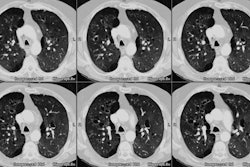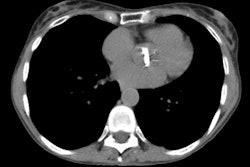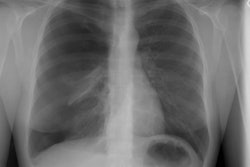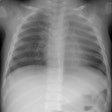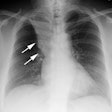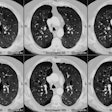Radiology 1997 Sep;204(3):685-693. Lung volume reduction surgery: comparison of preoperative radiologic features and clinical outcome.
Slone RM, Pilgram TK, Gierada DS, Sagel SS, Glazer HS, Yusen RD, Cooper JD
PURPOSE: To examine the relationship between preoperative radiologic findings and clinical outcome after lung volume reduction surgery. MATERIALS AND METHODS: In 50 consecutive patients, preoperative chest radiographs and computed tomographic (CT) scans were scored by four radiologists for features related to the severity and distribution of emphysema and compared with clinical improvement in forced expiratory volume in 1 second (FEV1), arterial partial pressure of oxygen, and exercise tolerance 6 months after surgery. RESULTS: In the 47 surviving patients, follow-up data showed greater postoperative improvement in function in patients with a global pattern of predominantly upper-lobe emphysema (P < .05) and in patients with a more heterogeneous distribution of emphysema, compressed lung, and a larger percentage of normal and mildly emphysematous lung (P < .05 for improvement in FEV1). Radiographic scores for individual features were more strongly correlated with outcome than CT scores. The combination of upper-lobe severity and percentage of normal and mildly emphysematous lung at CT were the strongest predictors of improvement in FEV1 (r2 = .49). The three patients who died were older (P = .05) and had more severe, diffuse emphysema compared with other patients. CONCLUSION: Imaging studies may help predict the degree of improvement and therefore should be considered an integral part of an objective patient selection process. Radiography alone may be adequate for initial screening.
PMID: 9280244, MUID: 97424322

